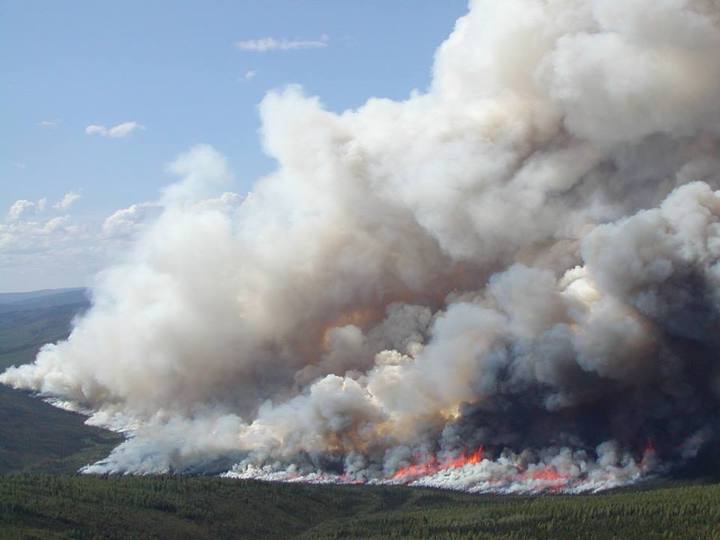This year’s wildfire season is shaping up to be a historic one for Alaska and Canada. As of July 15th, fires have blackened nearly 21,000 square miles of land. (That’s nearly the size of West Virginia.) Both the number of fires and the size of the area they’ve affected is above average for Canada, the country’s natural resources department reports. Meanwhile, Alaska’s Division of Forestry reports the state “is on pace to break the record for the largest fire season on record in terms of acreage burned.”
Wildfires aren’t all bad news. They’re a natural part of the ecology in these regions. They often increase the biodiversity in an area because the fires burn unevenly, leaving various plants alive and creating diverse mini-ecosystems for different plant and animal populations. But unusually large fires can cause problems. One major worry: The resulting smoke can travel far and wide. Even a fire that burns out in the wilderness and doesn’t directly threaten people’s homes may still produce smoke that blows over urban regions, forcing residents to stay indoors for several days.

During the first two weeks of July, wildfire smoke plumes from North America circled the top of the globe, blowing west over Russia and east over the United States. A handful of northern U.S. states had to put out air advisories. (Minnesota was hit particularly hard.)
Large wildfires also release more carbon into the atmosphere, contributing to global warming. The carbon comes from burned trees and tundra. It’s a positive feedback loop, with negative consequences: The warming climate itself contributes to larger forest fires and longer fire seasons.





